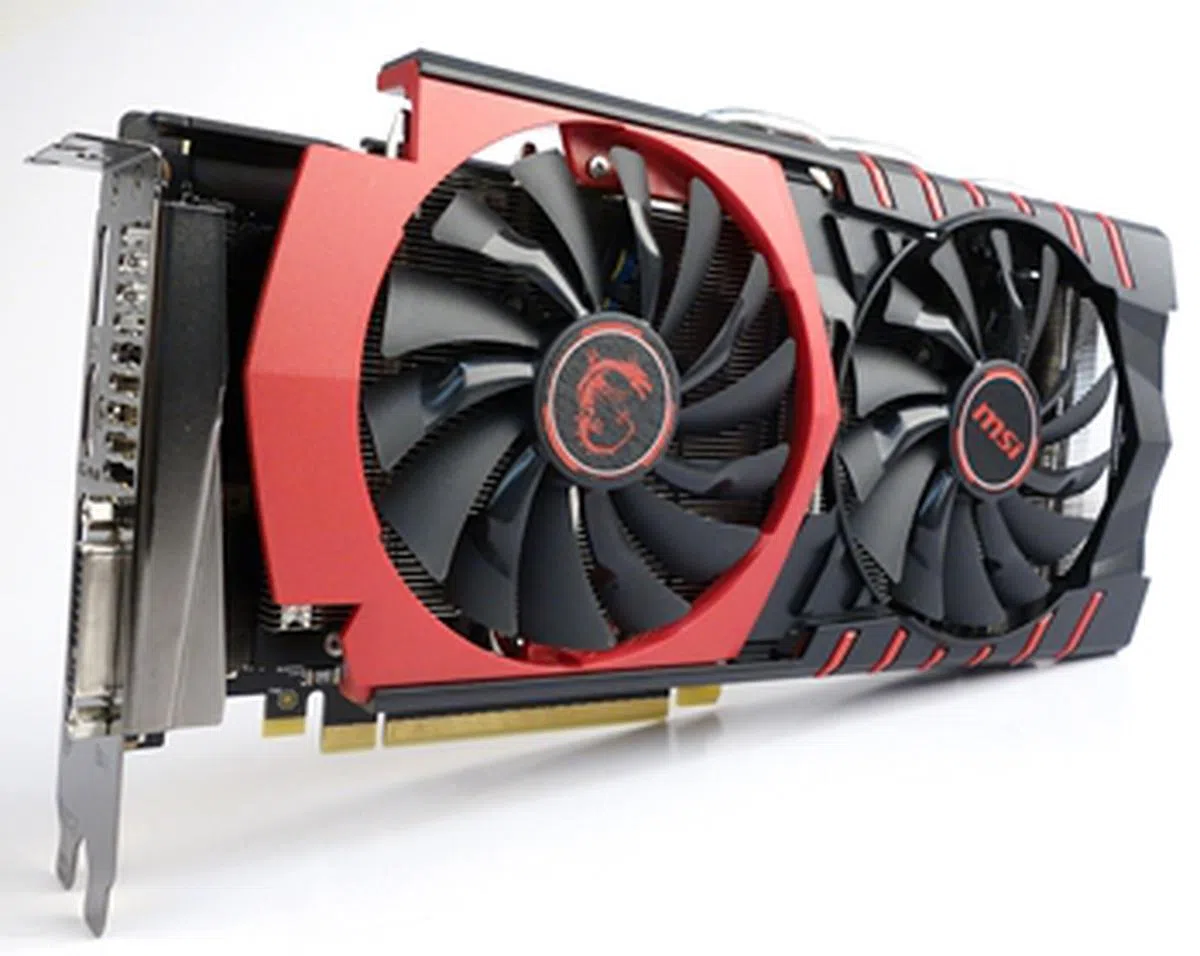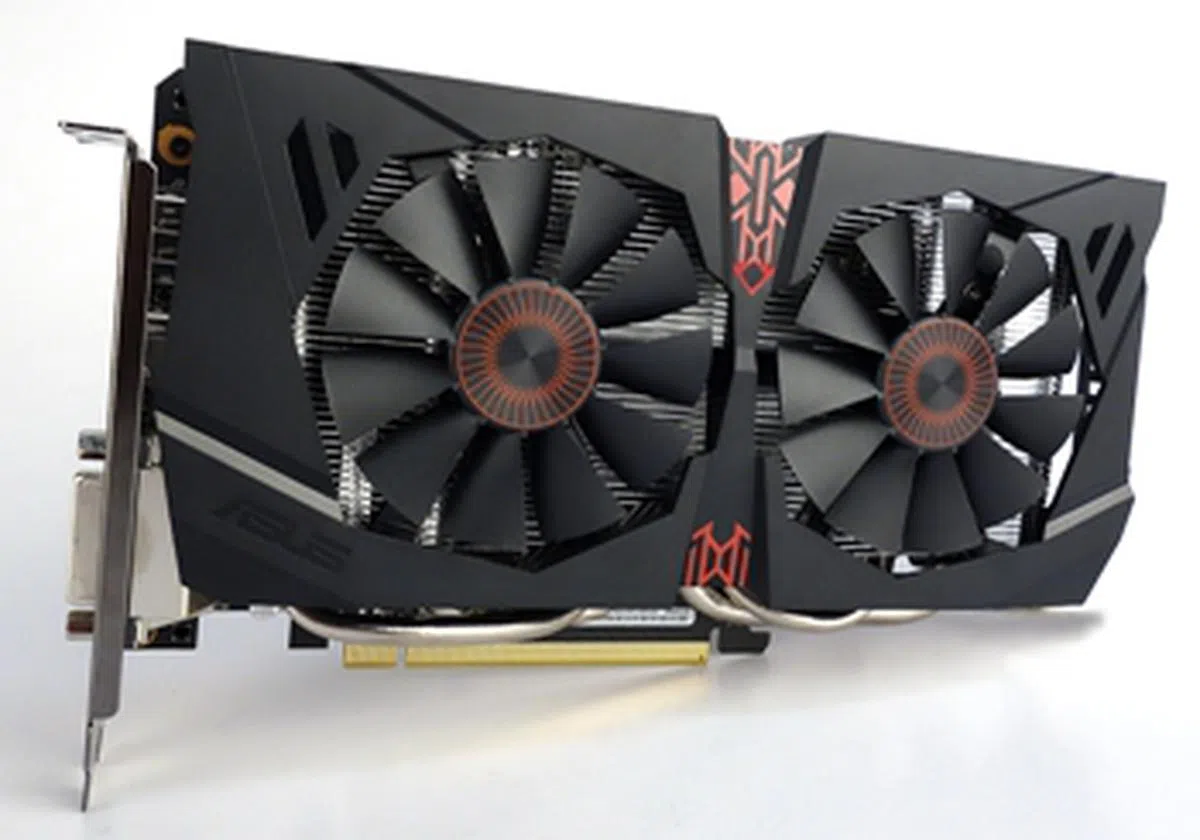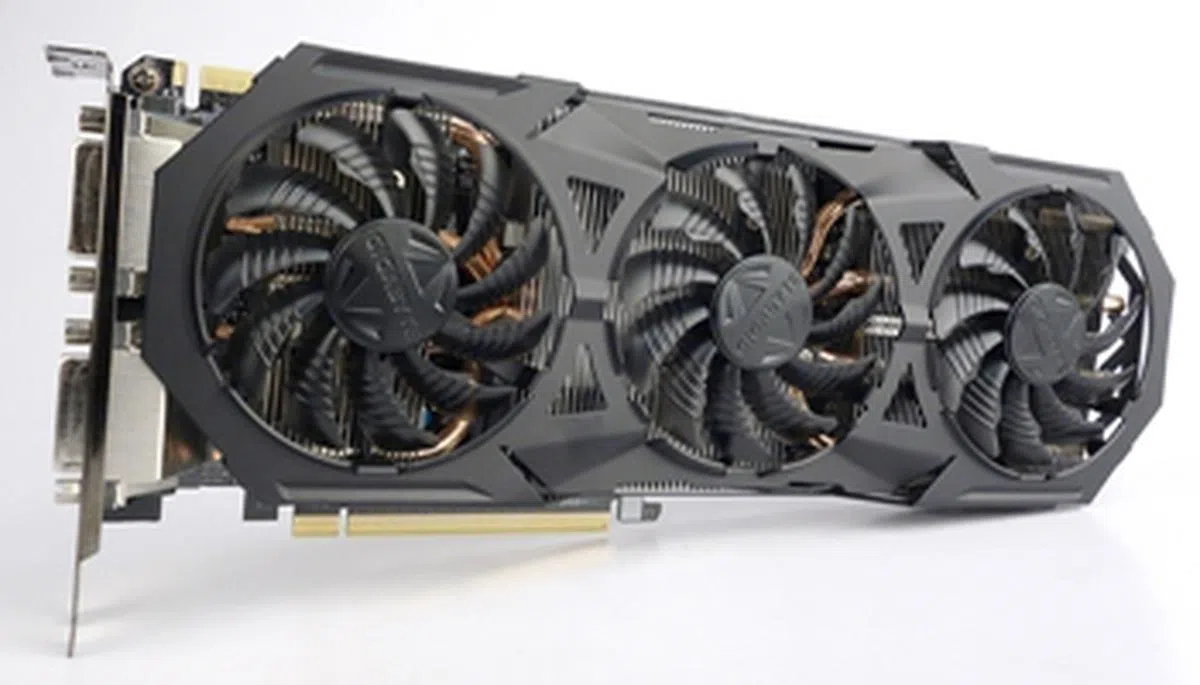NVIDIA GeForce GTX 960: 3-way custom card shootout
Three popular brands of custom GeForce GTX 960 graphics cards were rounded up for a mini shootout. Find out which of these cards from ASUS, Gigabyte and MSI, will appeal to you with their customized cooling solutions and GPU tweaking software.
By Wong Chung Wee -
NVIDIA GeForce GTX 960 cards from add-in partners

The NVIDIA GeForce GTX 960 is meant to appeal to mass market gaming segment; however, our initial impression of the card can be described as saccharine as the card wasn't quite on the mark of its targeted sweet spot.
The NVIDIA GeForce GTX 960 graphics card is designed and priced to target the mass market gamers. As a result, the add-in card partners have more free reign to exercise their creative efforts to differentiate their GTX 960 products. In comparison with the predecessor GeForce GTX 760, and its closest AMD rival, the AMD Radeon HD R9 280, the performance of GTX 960 wasn't outstanding from our detailed performance review. In fact, we concluded this new mass market GPU will appeal to existing owners of GeForce GTX 660 and older mid-range cards. At launch, the ASUS Strix GeForce GTX 960 was under our scrutiny, so let's revisit this card to see how it stands among its competitors; the Gigabyte GeForce GTX 960 G1 Gaming and the MSI GeForce GTX 960 Gaming 2G .
ASUS Strix GeForce GTX 960 2GB GDDR5

Our ASUS Strix GeForce GTX 960 was in OC mode right out of the box, with a base clock speed of 1253MHz, and a boost clock of 1317MHz. Its 2GB of GDDR5 memory modules operate at 7200MHz.

The ASUS Strix GeForce GTX 960 OC edition card has two performance profiles that can be toggled using the ASUS GPU Tweak software. In its default Gaming mode, the card operates at a base clock speed of 1228MHz, and a boost clock of 1291MHz. In its OC mode, which was the default of our ASUS card, it is rated to perform at a base clock of 1253MHz, with a boost clock speed of 1317MHz. Its 2GB of GDDR5 memory has a operating frequency of 7200MHz, regardless of the card's performance mode.

The rear backplate of the ASUS card provides protection and cooling for the PCB.
Despite being a mid-range card, the ASUS card boasts of high-end components. For a start, it sports the usual Super Alloy Power (SAP) VRM components that drive a 5-phase power design system; in addition, there's a dedicated SAP capacitor located behind the overclocked GM204 GPU so that the capacitor further augments input stability, especially during overclocking. But it isn't visible as the card has a rear metal backplate, which provides extra protection. According to ASUS, it's able to lower the temperature of the card's PCB.

At this angle, we can see the four 10mm heatpipes that draw heat away from the GM204 GPU.
To keep the card's temperature in check, the card features the DirectCU II cooling system with 0dB fan technology. Essentially, the pair of cooling fans will stop spinning for quiet operations when the GPU core is below 65 degrees Celsius. So for "light" gaming sessions, you are able to enjoy the silence. This technology isn't limited to ASUS as MSI and Gigabyte have similar features for their respective cards. When the fans are operating, they cool the oversized aluminum heatsink with four embedded, 10mm heatpipes to draw heat away from the overclocked GM204 GPU.

The ASUS card has a dual-link DVI-I connector, a HDMI 2.0 port, and three DisplayPort ports.

The 'S' button is labeled as "Power Saving" in the tooltip balloon. The 'O' button is the "Overclocking" button. Activating the "Default" button will set the card at its OC mode.
To enhance the user experience, the ASUS GPU Tweak works together with XSplit Gamecaster. Owners of the ASUS GTX 960 card, and other eligible cards, will be able to enjoy a one-year license from XSplit Gamecaster to record and stream your gameplay experiences. The XSplit Gamecaster has be downloaded and installed separately. As usual, the ASUS GPU Tweak allows for monitoring and overclocking; at the same time, toggling between performance modes is also a breeze. However, the performance modes set by the "Power Saving" and "Overclocking" buttons didn't conform to the official specifications of the card. In our instance, the Power Saving button set the card's base clock speed to 1204MHz, and boost clock was at 1267MHz; while the Overclocking button overclocked the card to a base clock of 1280MHz, with a bost clock speed of 1343MHz. Only did the Default button set things right as enabling it will put the card in its OC Mode, with operating frequencies as listed in its official specifications.
MSI GeForce GTX 960 Gaming 2G 2GB GDDR5

The MSI GeForce GTX 960 Gaming 2G is one of the most meticulously packaged card we have come across so far. Look at the decal that describes Zero Frozr feature, and the dust covers for its video ports!

Right out of the box, our MSI GTX 960 Gaming 2G card has a default base clock speed of 1216MHz, and a boost clock of 1279MHz. Our card's BIOS version is NV320MH.160 but you can use the MSI Live Update 6 application to update the BIOS and graphics driver. Its 2GB of video memory operates at 7010MHz. In fact, among the three cards, its overclocked profile is the least aggressive. The MSI card has three official operating modes; in OC mode, its GPU core operates at 1241MHz (boost clock speed: 1304MHz), in Gaming mode, its base clock speed is 1190MHz (boost clock speed: 1253MHz), and in finally in Silent mode, the card will run at 1127MHz (boost clock speed: 1178MHz). Its 2GB video memory operates at a constant of 7010MHz.

The MSI GTX 960 Gaming 2G sports the same Twin Frozr V cooling system as the MSI GeForce GTX 980 Gaming 4G.
The card features the same Twin Frozr V cooling system as the MSI GeForce GTX 980 Gaming 4G. We see the pair of 100mm Torx cooling fans that generate airflow over the nickel-coated GPU heatsink with the SuperSU architecture.

The dragon insignia of the MSI card glows white, and with the updated Gaming App, you have more control over its LED lighting.
The fan shroud houses an LED lighting that can be controlled using the updated MSI Gaming App. Noticed that the Torx cooling fans had stopped operation in the photo above. This was the Zero Frozr feature at work then.

The MSI Gaming App has been updated with the new LED feature that is accessed via the LED tab. The Eye Rest tab is just above the new LED tab.
The updated MSI Gaming App has a new LED feature that allows you to control the LED lighting of the dragon insignia. There are five operational modes and it even allows you to turn off the lighting. It also retains its existing capabilities like toggling among the three performance profiles, and customizing the system's display using its Eye Rest feature. Eye Rest and the rest of the display lighting features are accessed via the Eye Rest tab.

The MSI GTX 960 Gaming 2G doesn't have a rear backplate. It also helps the card to maintain its thin, dual-slot profile.

The card has three DisplayPort ports, a HDMI 2.0 port, and a dual-linked DVI-I port.
Gigabyte GeForce GTX 960 G1 Gaming 2GB GDDR5

The Gigabyte GeForce GTX 960 G1 Gaming card is the longest card in this shootout, all thanks to its Windforce 3x cooling system.

The Gigabyte GeForce GTX 960 G1 Gaming is the longest card in this shootout. This is due to its triplet of cooling fans and the accompaying heatsink that make up its Windforce 3x cooling system. In terms of its clock speeds, it ranks second to the ASUS card as its base clock speed is 1241MHz, with a boost clock of 1304MHz.

Once the cooling fans stop operations, the LED lighting will light up the words "Silent" and "Stop" as a visual cue.
Another point to note is the card's updated fan shroud, like the MSI GeForce GTX 960 Gaming 2G, which has LED lighting to indicate the cooling fans' operation status. The "Silent" and "Stop" indicators will light up when the cooling fans stop. However, the Windforce insignia's light cannot be turned off by its OC Guru II tuning application.

The card has a rear metal plate for support and passive cooling.
The card has a rear metal plate with cutouts that have been arranged to fan out from the center, exposing the capacitor located directly behind the GM206 GPU of the card.

There are two dual-link DVI ports; one DVI-I, the other is DVI-D. The three DisplayPort ports are lined up and the lone HDMI port brings up the rear of the queue.
There are two dual-link DVI ports; one is DVI-I, the other, a DVI-D. The three DisplayPort ports are lined up and the lone HDMI 2.0 port brings up the rear of the queue. The card supports Gigabyte's Flex Display technology, which allows users to have more options when they opt for multi-display configurations. Some gamers may not own multiple displays that support DisplayPort connectors; therefore, the additional DVI port of the Gigabyte card will allow the gamer to enjoy a "4K surround" display with a pair of DVI displays, and one that supports DisplayPort technology. For a "full 4K surround" experience, three DisplayPort displays is required.
Here’s a table showing how all the tested cards measure up against other recent comparable graphics cards.
[hwzcompare]
[products=491673,494498,495196,491794,492765]
[width=175]
[caption=Custom NVIDIA GeForce GTX 960 Overclocked Cards compared]
[showprices=0]
[/hwzcompare]
Test Setup
These are the specifications of our graphics testbed:
- Intel Core i7-3960X (3.3GHz)
- ASUS P9X79 Pro (Intel X79 chipset) Motherboard
- 4 x 2GB DDR3-1600 G.Skill Ripjaws Memory
- Seagate 7200.10 200GB SATA hard drive (OS)
- Western Digital Caviar Black 7200 RPM 1TB SATA hard drive (Benchmarks + Games)
- Windows 7 Ultimate 64-bit SP1
The cards in the shootout are listed below and we tested them with NVIDIA GeForce drivers version 347.25.
- ASUS Strix GeForce GTX 960 2GB GDDR5 (ForceWare 347.25)
- Gigabyte GeForce GTX 960 G1 Gaming 2GB GDDR5 (ForceWare 347.25)
- MSI GeForce GTX 960 Gaming 2G 2GB GDDR5 (ForceWare 347.25)
Benchmarks
Since we've diagnosed the GeForce GTX 960 in detail in our performance review article, we'll only be running a subset of benchmarks in this feature:-
- Futuremark 3DMark 2013
- Crysis 3
For our temperature and power consumption tests, 3DMark 2013 was used.
Gaming Results



The ASUS GTX 960 OC edition card was expected to be the winner in our gaming benchmarks as it rolled off the factory floors with the most aggressive OC profile. However, it was the Gigabyte card that pulled ahead most of the time. With reference to the Crysis 3 results, the MSI card managed to edged out the rest at higher resolution of 2560 x 1600 pixels.
Overclocking Results
The Gigabyte GeForce GTX 960 G1 Gaming was the clear winner while the ASUS card was runner up. We managed to overclock the winning card to a high of 1341MHz for its base clock. In its overclocked state, its boost clock speed was 1404MHz. Its memory modules were overclocked to a high of 7620MHz, which was about 8% higher than its default value of 7010MHz. Despite reaching a higher overclocked state than the Gigabyte card, the ASUS card trailed behind as its overclocked memory modules only reached a high of 7556MHz, just about 1% lower than the Gigabyte card. The MSI card was a respectable third. Overall, in their overclocked states, the cards' performance levels were increased by about 8%.


Temperature and Power Consumption Results
The Twin Frozr V cooling system managed to keep the GM206 graphics core of the MSI card running coolest at 57 degrees Celsius. It also helped that the card has the lowest base clock speed of 1216MHz. It also had the lowest power draw of 255W under load. ASUS and Gigabyte weren't as efficient here because they operate at higher clock speeds.


Conclusion
The custom GTX 960 cards are targeting the mainstream gamers who are looking for more bang for the buck. This explains the attractive pricing of the cards that range from S$350 to S$389 in retail. This time round, the ASUS card was the cheapest of all at S$350, while the Gigabyte commanded a premium retail price of S$389. The MSI card retailed at S$359. Do note that these prices are street prices and actual shop prices may vary.
The Gigabyte card probably had a higher price tag due to its Flex Display technology given its extra DVI-D port to support this feature. From our prior experience with the GTX 960, we knew 4K gaming with a single GTX 960 card wasn't appealing. Hence, we felt the Flex Display feature was shoehorned into the Gigabyte card as an attempt to set it apart from the competition. For users who don't mind the default video connectivity options, those offered by either the ASUS or MSI card will suffice for their mainstream gaming requirements. The MSI GeForce GTX 960 Gaming 2G card required the least power to operate under load; in addition, it ran the coolest during our temperature testing. We like the updated MSI Gaming App that has paid attention to details like the ability to turn off or customizing the lighting behavior of the dragon insignia, housed in its Twin Frozr V fan shroud. Although the ASUS card has the most aggressive OC profile, it failed to usher it as a clear winner in our gaming benchmarks. We certainly appreciate the updated ASUS GPU Tweak; however, it didn't work as advertised as its Silent and Overclock buttons set the card to operate at non-official clock speeds.

We were hard pressed to select a clear winner but the MSI GeForce GTX 960 Gaming 2G managed to edge out the rest with its consistent performance and attention-to-detail MSI Gaming App utility.
In the end, the MSI GeForce GTX 960 Gaming 2G manages to edge out the competition, based on its attractive price point, consistent performance with less heat and lower power draw. Also, the updated MSI Gaming App that paid attention to finer details, was a nice touch to complete the package.
The Gigabyte card might seem to have an upper hand in benchmark figures, but the difference between the fastest and slowest cards are mostly under 2%, which is a very small figure to get worked up about as it's not a tangible difference. On the other hand, the MSI card is more efficient by opting for slightly lower clocks and getting better operating temperatures and lower power draw. Last but not least, Gigabyte's larger form factor would make it less favorable for more compact systems, which is a growing segment.
*Updated as of 25th March, 5.30pm*
Some of the street prices reported earlier may not represent actual shop prices and so we reached out to distributors to check on the suggested retail pricing. The SRP of the ASUS GeForce GTX 960 Strix 2GB GDDR5 OC edition graphics card is S$369. The MSI GeForce GTX 960 Gaming 2G is also priced at S$369. The Gigabyte GeForce GTX 960 G1 Gaming 2GB card’s SRP is S$399, making it the dearest of them all. In view of the suggested retail pricing, our recommendations and findings do not differ from our earlier published conclusion and thus the overal ratings remain the same. We have however revised down the value rating for the ASUS graphics card.
We hope this update helps set your expectations better.
Our articles may contain affiliate links. If you buy through these links, we may earn a small commission.





